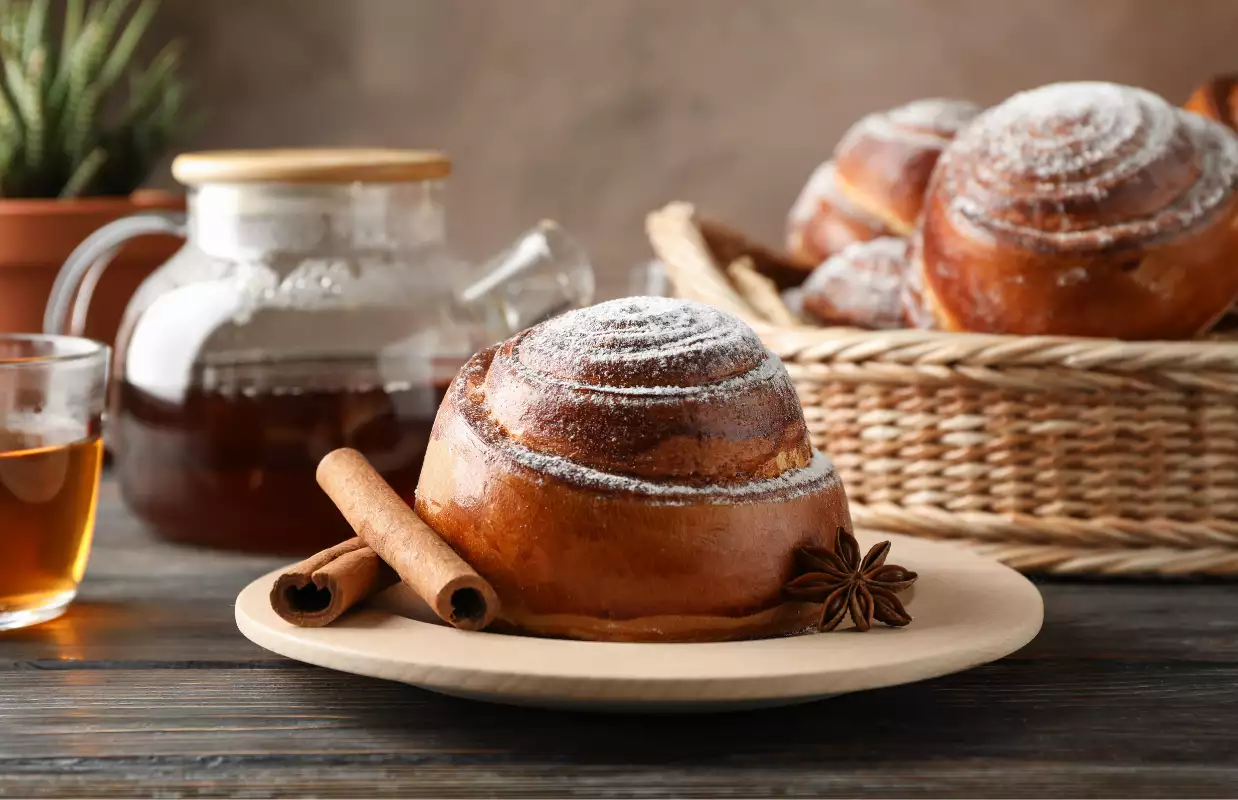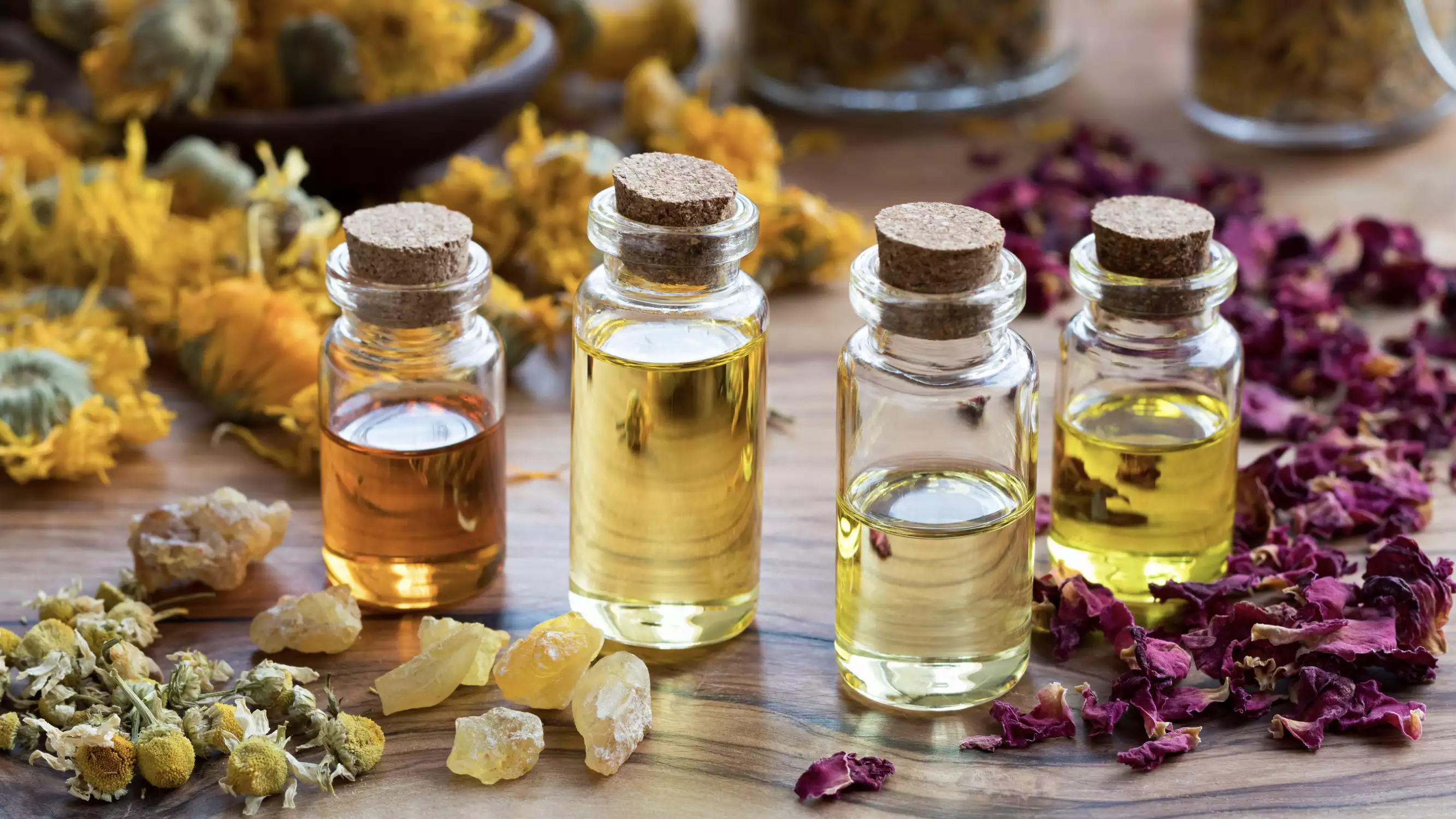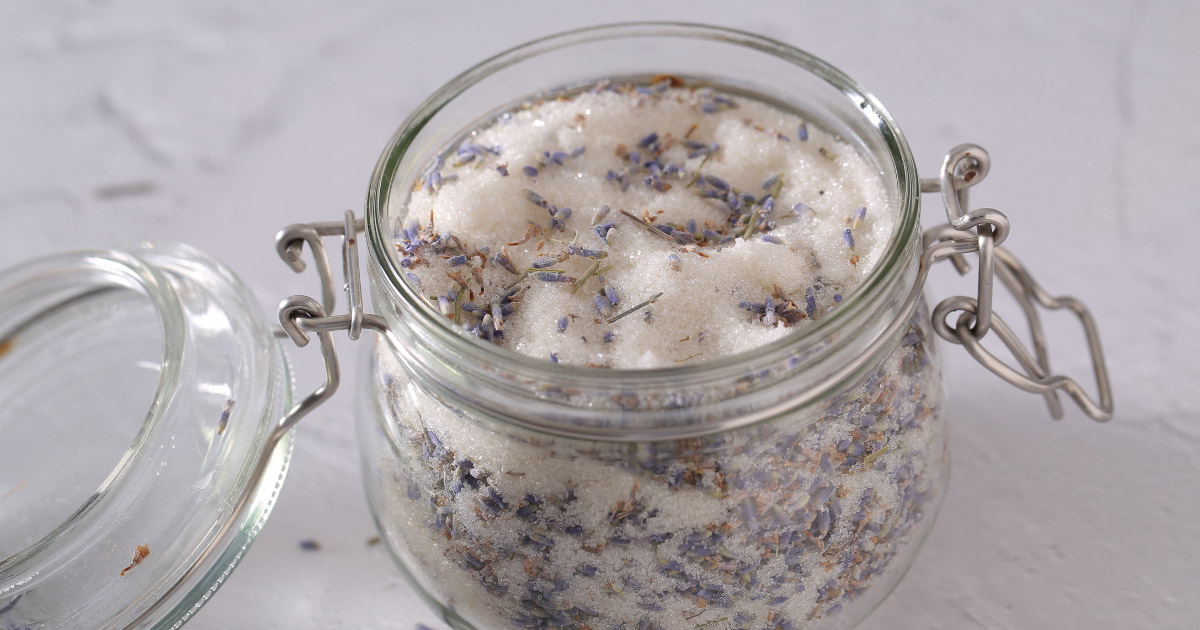Spice of Life: Cinnamon Bark’s Emotional Impact

The Emotional Magic of Cinnamon Bark
It's an emotional healing journey just to enter a room filled with the warm, familiar aroma of homemade cookies, freshly baked bread, or a favorite meal cooking. Smells such as these have a remarkable ability to stir positive emotions in our hearts and transport us to cherished memories.
Among these aromatic treasures, Cinnamon Bark stands out for its rich, spicy scent—and for the profound comfort it can inspire.
In this post, we’ll explore how Cinnamon oil distilled from the bark can help you unlock positive emotions.
We’ll examine the role scent plays in the dance between your limbic system and emotional state. You’ll discover how to blend Cinnamon Bark with other aromas to inspire various positive feelings, such as comfort, happiness, energy, and courage. And we’ll share an irresistible citrus spice diffuser blend!
Cinnamon oil, both the bark and the leaf, bear the same Latin name
As we have discussed in previous blogs, Cinnamon Bark and Cinnamon Leaf oils both bear the Latin name Cinnamomum verum, but they’re different oils with distinct chemistries. (Learn about their differences in my profile of Cinnamon Bark.) However, much of the information in this post can apply to both oils, because we are focusing on the aroma of Cinnamon, rather than the chemical components of the oil. Where the information only applies to Cinnamon Bark, I’ll note it for you.
Cinnamon Bark & Your Limbic System
Most of our senses, like touch, are first detected by our nerves and then sent to the thalamus, a brain structure that relays sensory and motor signals to the main part of the brain.
But scent is different. Scent bypasses the thalamus and registers directly with the olfactory bulb in the brain. Researchers believe this is why scent has such a strong impact on how we feel. As Psychology Today puts it:
The section of our brain that processes smells is part of our brain’s limbic system, which is involved in memories and emotions. This is why smell has the power to trigger emotional memories.
Students of our Aromatherapy Certification Program study aroma and the limbic system in more depth. To keep it simple here, let me just say that when you inhale an aroma you like, your nervous system calms down. This is one of the foundations of aromatherapy.
Of course, aroma is subjective. What one person finds comforting, another might associate with a stressful event. If you had a negative experience while tasting or smelling Cinnamon, all the Cinnamon Bark in the world won’t relax you.
That said, most people find the scent of Cinnamon Bark profoundly soothing—especially when it’s a soft, sweet presence in the air.
A 2018 study found that when cinnamaldehyde (the main component in Cinnamon Bark oil) was inhaled at low concentrations, people felt calm and relaxed. But at middle or higher concentrations, they began to feel more energized and excited. (This study applies to Cinnamon Bark, not Cinnamon Leaf.)
It’s fascinating that the same aroma can have a variety of effects on our mood!
Blending with Cinnamon Bark Oil
Cinnamon Bark is one of those unique aromas that’s exceptionally strong—even a drop or two can fill a room with scent!—yet it blends beautifully with a wide variety of other aromas to help with emotional healing. By selecting certain essential oils, you can nurture an array of emotional states in yourself and turn a bad day into a good day. Here are a few ways to apply essential oils for well-being:
For a good mood: Citrus and Cinnamon is a classic combination! Try Sweet Orange (Citrus sinensis). It’s hard not to smile when you breathe in a touch of Cinnamon layered with bright, sparkly, Sweet Orange and feel the emotional support!
To feel calm and centered: Blend a little Cinnamon oil with Lavender essential oil (Lavandula angustifolia). Thanks to its component linalool, lavender is renowned for relaxing the nervous system. A great way to manage stress.
To release pent-up emotions: Floral aromas can help us feel emotionally secure, allowing us to express ourselves freely and let go of old hurts. Try a drop of Rose (Rosa × damascena) or Geranium (Pelargonium graveolens var roseum) with Cinnamon.
For courage: Like Cinnamon Bark, Cardamom (Elettaria cardamomum) gets your blood flowing, moving energy through your body so you feel confident and brave.
For motivation and energy: Emboldening Rosemary (Salvia rosmarinus ct camphor) promotes circulation and helps you feel mentally sharp. (Cinnamon Bark and Rosemary would also be an excellent blend for respiratory care. Learn more about Cinnamon Bark’s respiratory benefits.)
Cinnamon Bark Safety
These safety guidelines are specific to Cinnamon Bark. For guidelines on Cinnamon Leaf, visit this post.
Cinnamon Bark oil is largely composed of cinnamaldehyde, a strong component—so strong that I even use it as a broad-spectrum antibacterial cleaner. Cinnamaldehyde is also an irritant to the skin and mucous membranes. So knowing how to blend with essential oils safely is all part of working with aromatherapy.
It’s important not to get Cinnamon Bark oil on your skin undiluted. If it does come into contact with your skin, immediately apply a nourishing carrier oil (such as jojoba, olive, or coconut oil) to the area. This will help dilute the Cinnamon oil. Then wash well with soap and water and apply a carrier oil to the area again to soothe the skin.
If you’re using the essential oil for a topical blend, the safest amount is no more than 1 drop of Cinnamon Bark oil in 2 ounces (60 ml) of carrier oil.
To avoid irritating the mucous membranes, only use 1 drop in your diffuser and no more than 1 drop in an inhaler.
Cinnamon Bark Recipe
This recipe combines a rich blend of spices with the sweet, sparkly scent of citrus. It fills your home with a delicious, cozy aroma—perfect for an evening with a good book or for inviting friends over for dinner. It also boosts self-compassion. Remember, one drop of cinnamon oil goes a long way.

Citrus Spice Diffuser Blend
5 drops Sweet Orange essential oil (Citrus sinensis)
2 drops Ginger essential oil (Zingiber officinale)
1 drop Cinnamon Bark essential oil (Cinnamomum verum)
Fill your diffuser with water and drop the essential oils in.
My Takeaway
When we understand the intricate connection between our limbic system and emotional state, we gain insight into the transformative power of aroma and can effectively devise strategies to help us overcome sometimes difficult emotions. Sometimes, painful life experiences come out of nowhere. Knowing that we have present-moment support in our essential oil allies brings a positive impact on our emotions. And less stress means less anxiety and better sleep! It all works together. Cinnamon bark's familiar spicy warmth makes it a wonderful cornerstone oil for blends that can support our feelings of positivity, security, calm, and motivation.

Unleash Your Inner Power: A Transformative Sacral Chakra Workshop
This is a journey of self-discovery and empowerment. Using key essential oils and the supportive energy of Carnelian, let’s get those creative juices flowing! Physiologically, the Sacral Chakra is linked to the urinary tract system, reproductive organs, and lower back.
References
Jin, L., Haviland-Jones, J., E Simon, J., and J Tepper, B. (2018). Influence of Aroma Intensity and Nasal Pungency on the ‘Mood Signature’ of Common Aroma Compounds in a Mixed Ethnic Population. Food Quality and Preference. 65, 164-174. https://doi.org/10.1016/j.foodqual.2017.10.017
Margalit, L. (2017, January 20). Sensory Marketing: The Smell of Cinnamon that Made Me Buy. Psychology Today. https://www.psychologytoday.com/us/blog/behind-online-behavior/201701/sensory-marketing-the-smell-cinnamon-made-me-buy
Moss, M., Cook, J., Wesnes, K., & Duckett, P. (2003). Aromas of rosemary and lavender essential oils differentially affect cognition and mood in healthy adults. The International journal of neuroscience, 113(1), 15–38. https://doi.org/10.1080/00207450390161903
Woelk, H. and Schläfke, S. (2010) A multi-center, double-blind, randomised study of the Lavender oil preparation Silexan in comparison to Lorazepam for generalized anxiety disorder. Phytomedicine 17, 2, 94-99.





